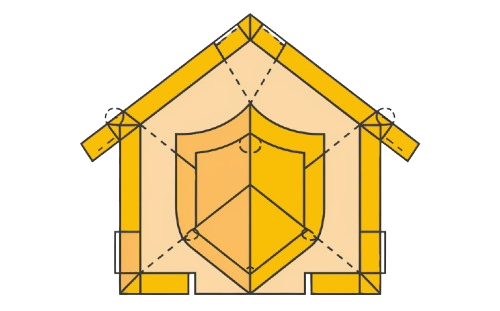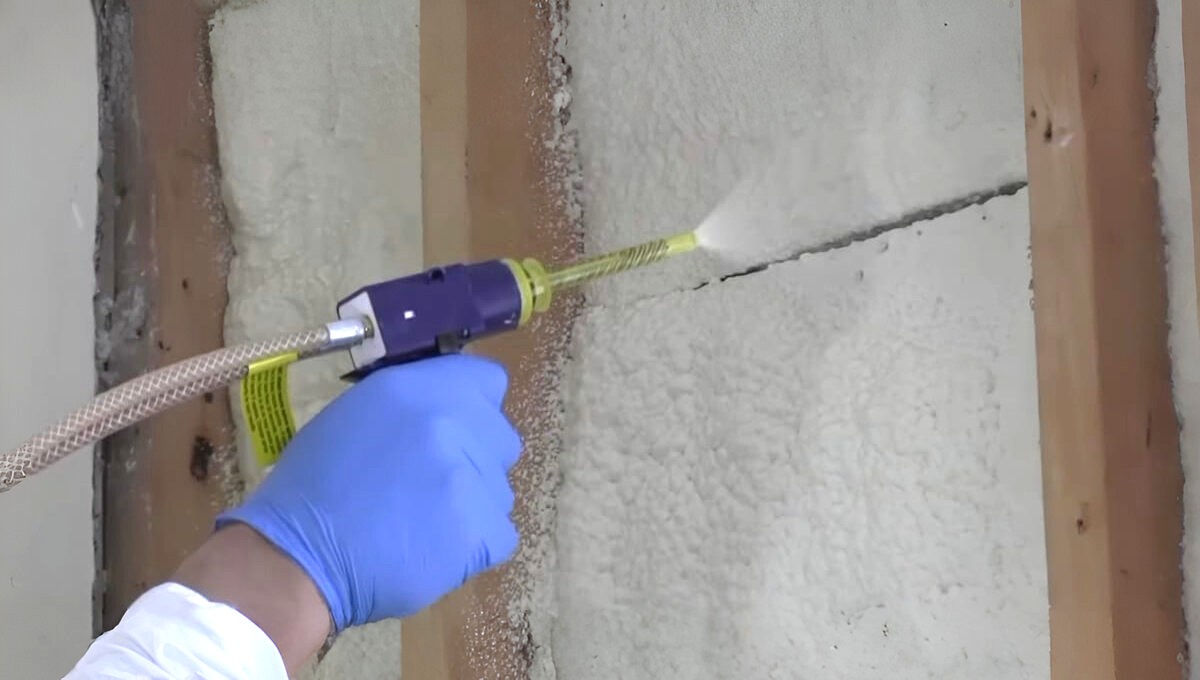If you’ve cranked up the heater on chilly days and found your home still struggling to stay warm, you might be wondering whether it’s time to invest in a new HVAC system. However, the surprising news is that the problem may not be with your heater being faulty or too old. Instead, the key to helping your home maintain its internal temperature and keep energy costs low could be how well your insulation is performing. Often, unwanted moisture and improperly installed insulation prevent your home from keeping its internal environment functioning properly.
When considering whether to install new insulation in your home, and you’re wondering about the spray foam insulation thickness, you’ve tapped into a material that has gained popularity over the years for a variety of reasons. To learn more and read about the benefits, cost, and optimum thickness needed to protect your home’s needs, homeowners often apply between 10 to 12 inches of spray foam. However, that’s not a one-size-fits-all solution. The right amount varies depending on different factors you should consider when deciding the ideal thickness for your space.
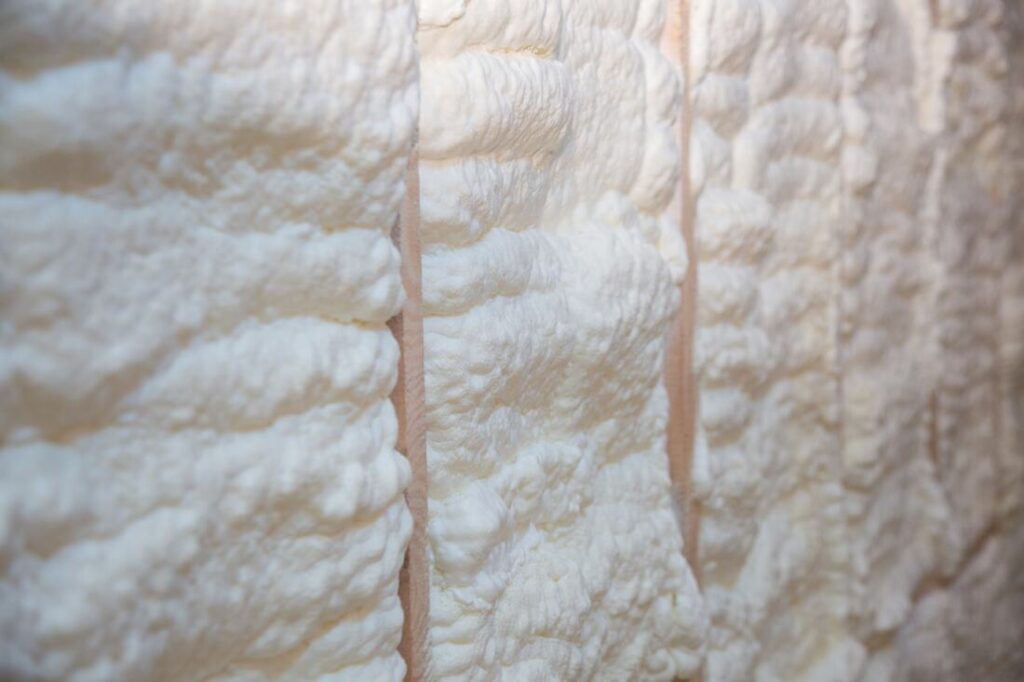
How Thick Should Spray Foam Insulation Be Applied?
The thickness of spray foam insulation varies based on factors such as climate, application, and insulation needs. Closed Cell spray foam, known for its high R-value (R5.6 to R8 per inch), is often applied at 2 to 3 inches for walls and 4 to 5 inches for ceilings or roof decks, offering superior heat resistance. For areas demanding robust insulation, applying 6 inches of Closed Cell foam can achieve an impressive R-value of up to R19.
In contrast, Open Cell foam, which is lighter and less dense, requires more material for equivalent protection. It typically needs 3 inches in walls and 6 to 10 inches for roof decks, with an R-value of R2 to R3 per inch. Choosing the right type and thickness ensures your home stays well-insulated, minimizing energy loss. Having a professional evaluate your home can help you decide the ideal amount for your specific needs.
Key Factors Influencing Spray Foam Insulation Thickness
Impact of Local Climate on Insulation Needs
Local climate conditions play a crucial role in determining the optimal thickness of spray foam insulation. In areas where the weather tends to be cold, higher thermal resistance is necessary to maintain a warm indoor environment. For buildings in cold climates, it is common to require insulation up to R49 to effectively minimize heat loss.
Building Specifics and Design Considerations
The type and design of a building also significantly affect how thick the spray foam insulation needs to be. Residential and commercial buildings, as well as metal buildings, have different levels of insulation requirements. Features like large windows, vaulted ceilings, or cathedral ceilings can increase the need for thicker insulation to prevent energy leaks. In the USA, depending on the climate zones, minimum insulation values like R30 are often recommended to ensure energy efficiency and comfort.
Aligning with Energy Efficiency Goals
When setting energy efficiency goals, the thickness of your spray foam insulation is a critical factor. In colder regions, aiming for an R-value of around R48 can be ideal, especially for areas like attics where maintaining a consistent indoor temperature is vital. For moderate climate zones, R30 might be suitable, but always consider the specific needs of your building to optimize energy use and comfort levels.
Adherence to Building Codes and Regulations
Lastly, local building codes and regulations enforced by government authorities dictate the minimum insulation levels and thickness for different parts of a structure, including walls, roofs, and crawl spaces. For example, in places like Phoenix, where temperatures can soar, the local energy code might require R38 when insulating ceilings to reduce cooling demands and enhance comfort.
Calculating the Ideal Thickness for Spray Foam Insulation
Understanding R-Value and Thermal Resistance
When calculating the ideal insulation thickness, understanding the R-value—a measure of how well an insulating material like spray foam resists heat flow—is crucial. A higher R-value indicates higher thermal performance. For instance, insulation with an R49 is considered very effective in cold climates, providing higher thermal resistance. Conversely, in milder climates, an R30 may be required. The optimal thickness for your building not only depends on the climate but also on your insulation goals and local building codes.
Conducting a Thermal Analysis
Conducting a thermal analysis of your building is an important step in calculating the ideal spray foam insulation thickness. This process involves assessing thermal performance under different weather conditions. By understanding the specific climate in which your building is located, along with its typical energy consumption, heat gain, and the intensity of local weather, you can more accurately ascertain the optimal thermal resistance. This analysis often requires considering how well your current HVAC system can maintain comfort, further influencing the decision on spray foam thickness.
Consulting with Insulation Professionals
For many, consulting with insulation professionals to calculate the ideal spray foam thickness and R-value for their building proves most effective. Experienced professionals can provide the right calculations and recommendations concerning insulation thickness, which not only saves time and effort but also reduces the likelihood of making errors in your insulation strategy. These experts can tailor their advice specifically to the needs of your building, ensuring that all thermal performance and energy efficiency goals are met effectively.
Advantages of Proper Insulation Thickness
Enhancing Comfort and Efficiency with Spray Foam Insulation
Maximizing the benefits of spray foam insulation requires meticulous planning and ensuring the insulation is tailored to the specific needs of your building. The standard thickness not only helps to create an effective air seal and thermal resistance, but can also ensure your home is comfortable throughout the year. For homeowners looking to lower utility bills, soundproof a room, or maintain consistent indoor temperatures, choosing the right amount of insulation is key. Spray foam comes in types like open-cell and closed-cell, each having different requirements based on the application and location. Applying several inches of the right type can dramatically improve energy efficiency and living comfort.
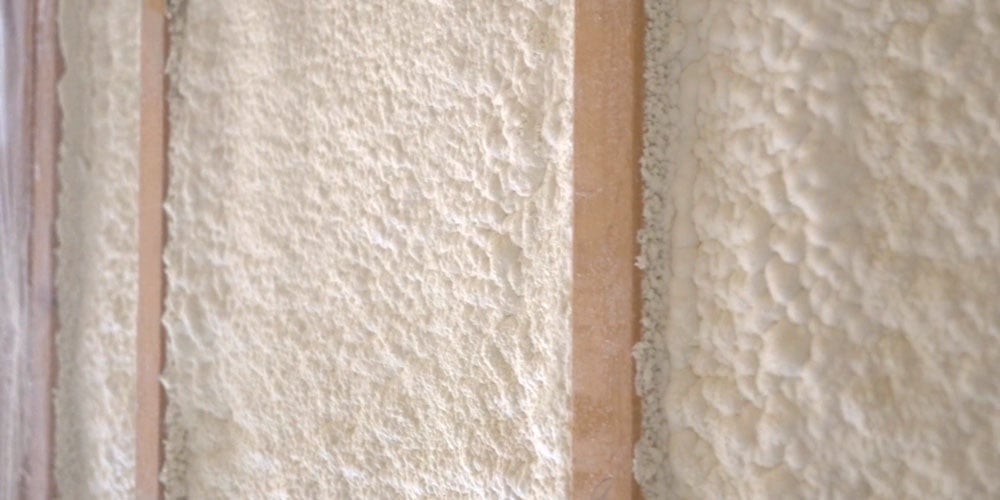
Controlling Moisture and Condensation with Adequate Insulation
Beyond mere temperature control, spray foam insulation acts as a powerful air-seal barrier that shields your house from harsh temperatures and controls moisture. This is particularly crucial for those facing extreme weather or living in a damp climate. Adequate insulation protects the building from potential water damage and prevents mold growth, maintaining a dry and healthy environment. Especially in areas prone to flooding, having professionally installed spray foam with the proper vapor barrier can prevent infiltration of water and problems with condensation, safeguarding ceilings, floors, and walls from dampness.
Also Read: Is Spray Foam Insulation Waterproof?
Boosting Energy Efficiency Through Proper Insulation
For homeowners wondering about high energy costs, the culprit is often defective home insulation. Improperly installed insulation or coverings that leave tiny gaps allow outside air to sneak into the house, pushing your HVAC system, including air conditioner and heater, into overdrive to maintain balance in temperature. By ensuring perfectly installed spray foam insulation with the adequate thickness, residents can not only save on exorbitant bills but also reduce energy consumption by up to 30%. Air leaks and drafts are effectively prevented, significantly reducing the strain on heating and cooling systems.
Improving Indoor Air Quality with Spray Foam
Choosing the right insulation thickness can also reduce seasonal allergies. Spray foam creates an impenetrable air seal, keeping allergens from entering the living space. This creates an allergen-free environment, providing an extra layer of protection against potential allergy triggers. Homeowners will notice a significant improvement in the quality of air, making spaces more comfortable and healthier to live in.
Utilizing the Soundproofing Qualities of Spray Foam
Spray foam insulation also boasts excellent soundproofing properties. As a sound dampener, it effectively reduces noise from entering the space, which is especially helpful in a noisy environment. Whether it’s street noise or loud neighbors, properly installed spray foam can greatly enhance the peacefulness of your building.
Challenges of Inadequate Insulation Thickness
Choosing the incorrect insulation thickness can cause various problems for a building, leading primarily to thermal discomfort. For instance, applying only 2 to 3 inches of open-cell spray foam on ceilings might seem like a good scenario for minimal insulation needs, but it can actually invite several potential issues. Thermal bridging, a problem where inappropriate insulation thickness allows for heat transfer, can result in significant heat loss during cold weather and heat gain in the summer.
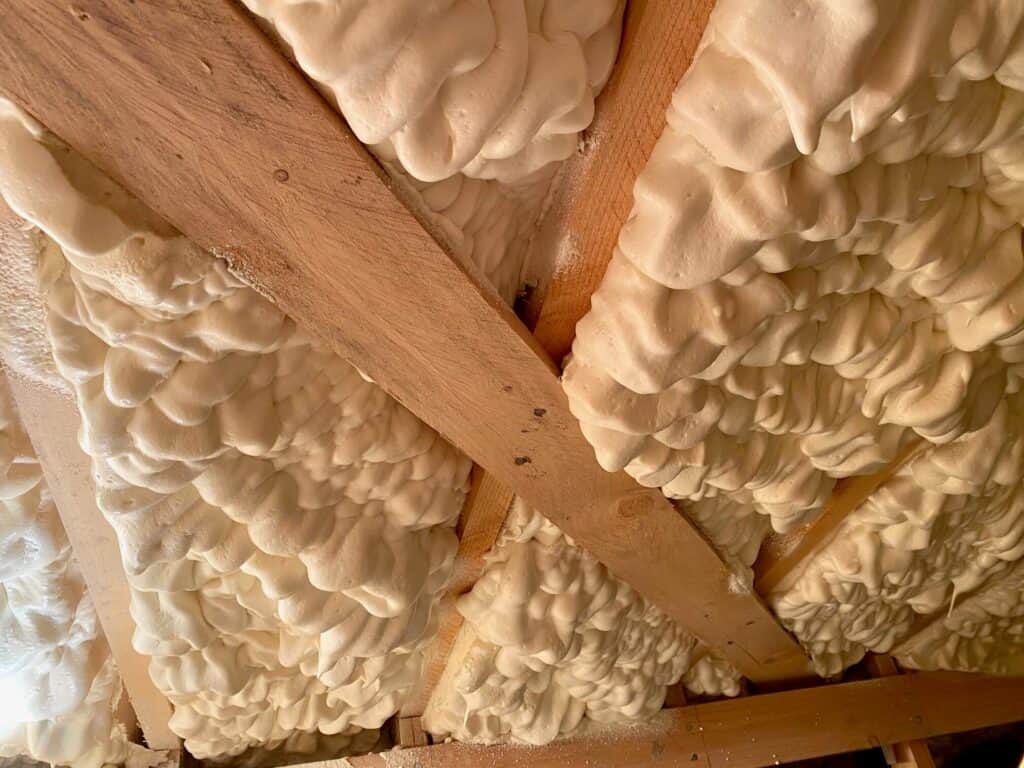
Moreover, improper insulation thickness can fail to fill tiny spaces completely, resulting in air leaks that facilitate air filtration and lead to poor indoor air quality within the building. Ensuring the right amount of insulation is crucial not only for comfort but also for the overall energy efficiency and air quality of your home or workspace.
Professional Installation vs. DIY Insulation
Installing spray foam insulation is a delicate process with no room for mistakes. While it may be tempting to install spray foam insulation yourself as a DIY project to master a skill and improve your home while saving costs, this approach is only advisable for very small projects. Professional installation, done by contractors who understand local building codes and climate needs, ensures all essential parameters are met to prevent material wastage and guarantee that the right amount of spray foam insulation thickness is used to keep your space air sealed.
A professional contractor with a state-issued license and insurance might be more expensive, but it saves time and energy in the long run. Professionals bring expertise that mitigates risks of incorrect installation, which can lead to inefficiencies or even structural issues in the future. For most homeowners, the benefits of a professionally installed system, ensuring effectiveness and durability, outweigh the initial savings of a DIY approach.
Final Thoughts
Spray foam insulation has steadily gained popularity as a highly effective solution, making it a preferred choice for homeowners. Ensuring the right insulation thickness is critical to maintain your building air sealed and comfortable. Contrary to the common belief among some homeowners, merely adding more layers of insulation does not always translate to improved efficiency; indeed, over-spraying can be detrimental. The maximum thickness should be carefully considered based on the specific requirements of your location and building type to optimize the air seal and avoid reducing its effectiveness.
Contact us today to connect with experienced professionals to ensure your spray foam insulation is applied with precision. The right thickness is crucial for maintaining an air-sealed and energy-efficient home. Expert guidance helps you avoid over-spraying while optimizing comfort and efficiency tailored to your building’s needs.
FAQ
What is the Best Thickness for Spray Foam Insulation?
The best thickness for spray foam insulation depends on the style. For closed-cell foam, use 2-3 inches for walls and 4-5 inches for the roof deck. With open-cell foam, keep the walls at the same thickness, but the roof deck should be sprayed to 6-10 inches for effective insulation.
Is 3 Inches of Spray Foam Enough?
For wall insulation, the recommended thickness of spray foam insulation with closed-cell foam is 2 to 3 inches. For ceilings or roof decks, a thickness of 4 to 5 inches will suffice for proper insulation.
What R-value is 2 Inches of Spray Foam?
Open-cell spray foam is vapor-permeable and has an R-value of R-3.5 to R-3.6 per inch. Filling a 2×4 cavity with it can yield an R-13 insulation value.
How Thin Can Spray Foam Be Applied?
Closed cell foam can be applied at a minimum of 1/2 inch, but this may require trimming if space is tight. Most closed cell foams need to be 2 inches thick to act as a class 2 vapor retarder, though products like BaySeal can achieve this at 1 inch.
